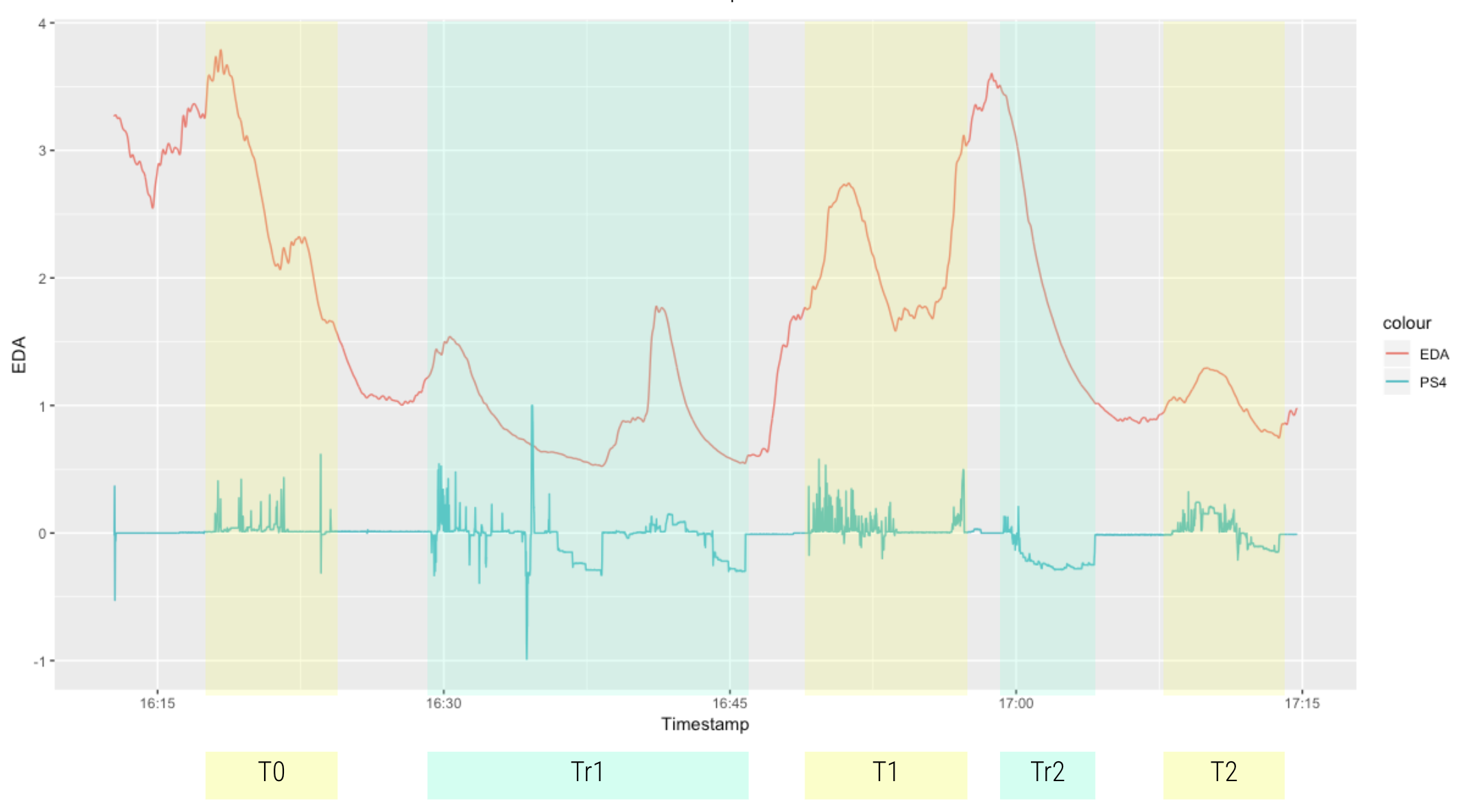EDA Trainer
Augmenting biofeedback training
Project for Affective Computing MAS.630
Fall 2018

Augmenting biofeedback training using visual, haptic, and auditory feedback to
- Gain overt understanding of covert biosignals
- Accelerate training
- Examine possibility of bidirectionality
Introduction:
EDA Trainer is inspired by the idea of using sensory substitution principles to “craft” new emotions. The question is, can you link affective states to external signals through training, and then use those signals to elicit that affective state?
As a first step to answer this question, I developed EDA Trainer. The EDA trainer trains the user to “feel” their EDA signal, to turn an overt physiological signal into one that is more easily perceived. The first step in the experiment is to see whether it is possible to train the user to feel their EDA. The training session utilizes visual, auditory, and haptic feedback system to train the user.

A preliminary experiment was conducted with n=7 participants, exploring the possibility of utilizing biofeedback to passively increase the participant’s interoceptive awareness of the changes in their EDA based on external stimuli. The goal of the preliminary experiment was to utilize a standard framework but modify the experiment to optimize biofeedback methods.
Each participant completes between two and three rounds of training and testing in the 75-minute session. The training stage is 5-10 minutes during which the user watches emotionally stimulating content to change their EDA level. The EDA level is monitored through the biosensors connected using gel electrodes. During the training stage, the participant receives visual feedback on how their EDA is changing in addition to auditory or haptic feedback to augment the visual feedback. The participant also logs their perceived changes in their EDA through a joystick.

The test session is identical to the training session but the user does not receive visual, haptic, or auditory feedback. By alternating the training and test session and comparing it to the user’s baseline test session, we can understand whether the training has helped improve the user’s understanding of their EDA.
The first round of the experiment showed that it is possible for people to gain interoceptive awareness of the changes in their EDA based on the qualitative survey results collected at the end of the session. This first round also had a tremendous amount of insight in terms of:
- What is the best metric to communicate through biofeedback (eg. absolute value vs. integral of absolute value showing the change in the EDA)
-
Methods for recording the user’s understanding of the EDA. Simple changes in the instructions given to the user for the joystick input had a great effect on the outcome of the experiment. Based on the different methods tested, a standard method will be adopted for the second round of experiments.
- Content type, follow-up sessions, and necessity of longitudinal studies with the same user.
- Which design of the haptic signal is more effective.

Future Steps:
The first step will be to conduct the second round of study with 5 participants using the new protocols developed. If the study proves to be effective, the next step would be to test whether the biofeedback signal that is now linked to the EDA (auditory or haptic) can be used to subconsciously control the EDA levels. If this part of the study proves to be true, this can for example be used to calm a user down during a panic episode, or to improve performance in a stressful situation.